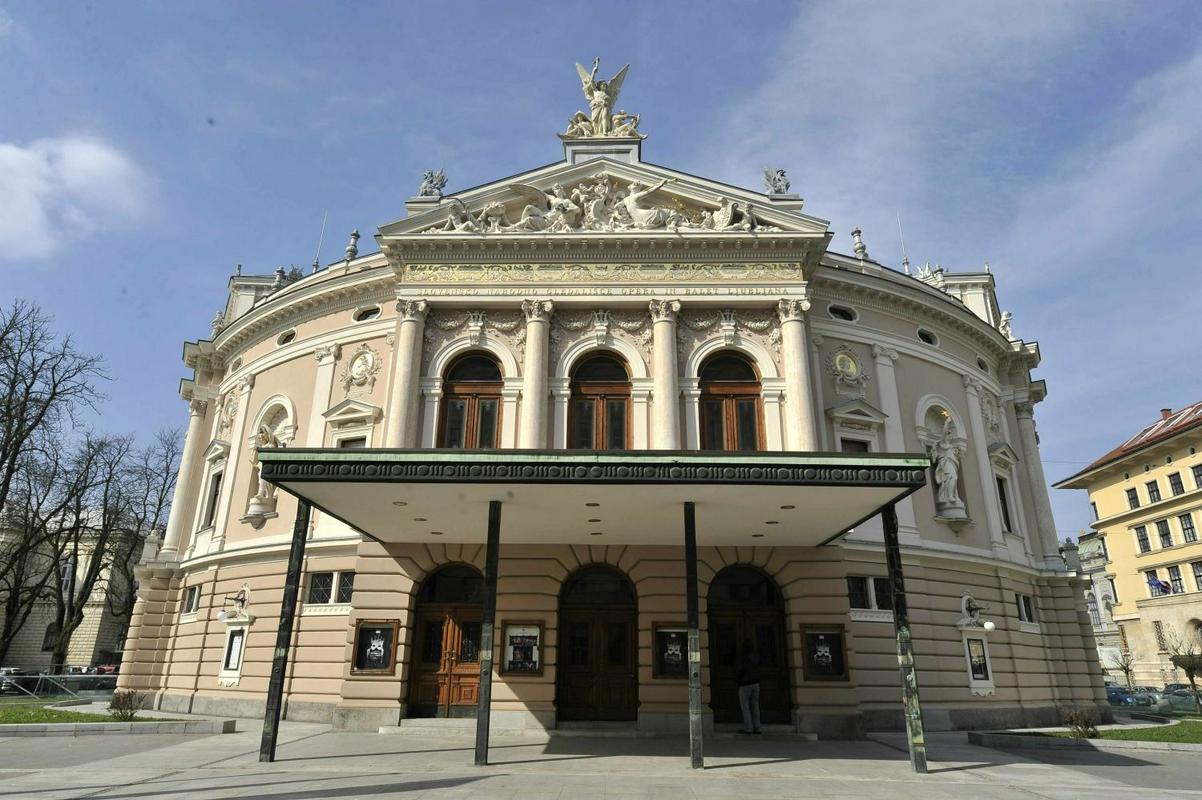
Ljubljana’s Opera Building stands apart not just because of its interesting architecture but also because of its status in the heart of Slovenian cultural life. Its history parallels both the political and the artistic development of the nation. And as the controversy over its recent expansion proves, the beloved building still evokes passionate opinions from the Slovenian people.
The Opera was built in 1892. It was the work of Czech architects Jan Vladimír Hráský and Anton Hruby. It was designed in a neo-Renaissance style, which was then in vogue. It was decorated with several allegorical statues, including two representing Comedy and Tragedy.
Just three years after its opening, a powerful earthquake struck Ljubljana, but it left the Opera building undamaged. In its early years, the structure was mostly used as a theater. Because Ljubljana was then divided on ethnic lines, the Opera hosted both Slovenian and German theater companies.
In the turmoil of World War I, the Opera was briefly converted into a movie theater, but after the war, it was used solely for opera performances. It became the home of a full-time orchestra and a ballet company.
Operas and ballets from around the world were staged there. Over the years, the building was also the site of many Slovenian premieres, including works that are now considered classics. Particularly after World War II, the opera company became well-known throughout Europe. In 1957, it even performed the Prokofiev opera The Love for Three Oranges in Paris, for which it won Philips’ Record of the Year award. It also toured the Netherlands, Czechoslovakia, and the United States. The company introduced the opera The Upper-Carniolan Nightingale, a work by the Czech-born Slovenian composer Anton Foerster, to eager audiences in Cleveland.
Despite the political turmoil of the 20th century, its cultural mission changed little over time. By the 1990s, however, the opera had become too small and technologically outdated, and an architectural competition was held in 1998. The winning plan called for a modernistic, anthracite-colored addition overlooking the original structure.
The architect’ initial proposal, to elevate the original roof, was shelved, but even so, the modern addition has proved controversial. Many observers dislike how the new wing towers over the renovated 19th century building. To make things worse, the project has been plagued with cost overruns, and a protected copper beech had to be chopped down to make room for the addition, angering many locals.
But significantly, the controversy focused the renovation project, not the institution. The Opera remains one of the most popular icons in Ljubljana – with a proud history to match.


































































